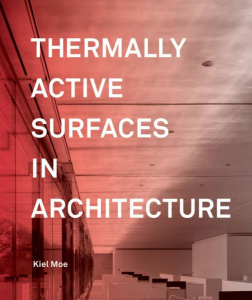Thermally Active Surfaces in Architecture
 The intent of this book is to document the basis and efficacy of heating, cooling, and building with thermally active surfaces. In this transformation of energy and building practices, the thermal conditioning of a building is decoupled from the ventilation system by using the mass of the building itself as the thermal system. This method of heat transfer is physiologically and thermodynamically optimal. It also reinvests the fabric of the building itself with a more a poignant role: the structure is also the primary mechanical system. As the basis of energy and construction strategies, it yields a cascading set of advantages for the building design and construction industry: radically lower energy consumption, more durable buildings, more healthy buildings, and more integrated building systems and design teams. An important aspect of thermally active surfaces is that they are low-tech yet high performance and are thus equally applicable in the developed and developing worlds. As such, thermally active surfaces are central to multiple aspects of sustainability. It is designed to explain this technique to architects, engineers, contractors, and clients. It consists of a few sections that include past , current, and future practices.
The intent of this book is to document the basis and efficacy of heating, cooling, and building with thermally active surfaces. In this transformation of energy and building practices, the thermal conditioning of a building is decoupled from the ventilation system by using the mass of the building itself as the thermal system. This method of heat transfer is physiologically and thermodynamically optimal. It also reinvests the fabric of the building itself with a more a poignant role: the structure is also the primary mechanical system. As the basis of energy and construction strategies, it yields a cascading set of advantages for the building design and construction industry: radically lower energy consumption, more durable buildings, more healthy buildings, and more integrated building systems and design teams. An important aspect of thermally active surfaces is that they are low-tech yet high performance and are thus equally applicable in the developed and developing worlds. As such, thermally active surfaces are central to multiple aspects of sustainability. It is designed to explain this technique to architects, engineers, contractors, and clients. It consists of a few sections that include past , current, and future practices.